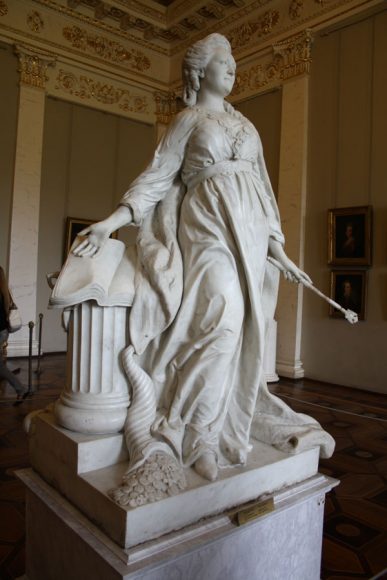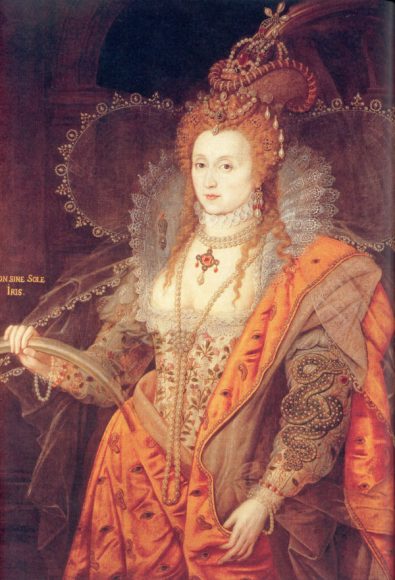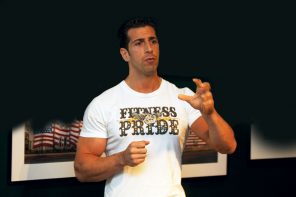These days it’s good to be queen. The diabolically dotty Oscar contender “The Favourite,” PBS’ “Victoria” and Netflix’s “The Crown” — which consider England’s Queens Anne, Victoria and Elizabeth II respectively — have made admiring subjects of critics and fans alike. But it’s not just well-crafted storytelling to which viewers are responding. To be a monarch and a woman is also to be a queen of hearts, an irresistible drama for audiences as it must be a challenge for the sovereigns themselves.
“To be a queen, I must rule,” Victoria tells her beloved “Lord M” — her mentor, William Lamb, second Viscount Melbourne — summing up the paradox in “Victoria.” “Yet to be a wife, it seems I must submit.” And she at least found in Prince Albert a first-class husband and father for their children. Make the right choice and, like Victoria, you position yourself to enjoy a long life and reign. Make one that fails to marry passion to reason, however, and you may wind up like Cleopatra, forced to forfeit both.
But what if you change the rules of the game, reversing the gender roles? The latest film iteration of “Mary Queen of Scots” offers a splendid example of a women who sought to triumph in the game of love — England’s Elizabeth I — along with the cautionary tale of Mary, for whom passion went to her head.
The story of “Mary Queen of Scots” belongs to what we like to call the Sylvia Plath school of narrative. That is, in telling the life of the suicidal poet, her husband Ted Hughes will always be the villain. (That he had two wives who committed suicide in exactly the same way does not inspire confidence in him as a husband.) Similarly, any film titled “Mary Queen of Scots” has got to feature Elizabeth as the heavy, or at least the less romantic counterpoint. And, indeed, trailers for “Mary” contain such historical howlers as an arid, pockmarked, spinsterish Elizabeth telling Mary how young, beautiful and vital she is. Like this encounter (they never met) and Mary’s Scottish accent (she was raised in France), nothing could be further from the truth.
Not that they weren’t real rivals for the English throne, albeit mighty opposites bound by blood. Elizabeth (1533-1603) and Mary (1542-87) were first cousins once removed, Elizabeth’s father, Henry VIII, and Mary’s grandmother — Margaret, Queen of Scotland — having been brother and sister.
Blood will out, but it will take you only so far. In her absorbing dual biography “Elizabeth & Mary: Cousins, Rivals, Queens” (Alfred A. Knopf, 2004), Jane Dunn explores how their different paths shaped vastly different views of queenship. Elizabeth saw firsthand at an early age what can befall a woman who must rely on a man. Often, she was thrown back on her own devices, her princess status a sometime thing, thanks to the cruel caprices of her father, who eliminated wife after wife — including her own mother, Anne Boleyn, wife number two — in a quest for a legitimate male heir.
Elizabeth also had the example of her older half-sister Mary’s disastrous marriage to Philip II of Spain, who was more interested in adding England to the portfolio of the Spanish Empire than in being an attentive husband — so much so that he came courting the kid sister while the wife was barely cold in the grave. (That Elizabeth would one day best Philip’s Armada and become England’s greatest ruler to date — and a woman at that — remains a richly ironic rebuke to both her monstrous father and opportunistic brother-in-law.)
So, it’s understandable that when Elizabeth succeeded her sister Mary, her priorities were to keep England and herself independent — indeed they were to her one and the same. This despite a hot-blooded nature that was naturally attracted to bad boys like Robert Dudley, Earl of Leicester, who would become her beloved master of horse yet never master of her heart. “Better beggar woman and single,” she reportedly once said, “than married and queen.”
The latter was Mary’s fate. From childhood, she was raised alongside the brotherly future Francis II of France to be his queen consort — a 180-degree turn from being queen in your own right. And happily beside him would she have stayed had it not been for his untimely death and French dynastic ambitions.
So back she went to Scotland, a country she hardly knew, whose throne belonged to her but to which she did not really belong. (It’s telling that she is called Mary, Queen of Scots, not Mary, Queen of Scotland.) There to the chagrin of Elizabeth — who was always concerned about her cousin becoming the Roman Catholic usurper of her Protestant throne — Mary married her cousin, Henry Stuart, Lord Darnley, a violent drunk by whom she had a son, James. Not long after, however, Darnley was killed, probably by James Hepburn, the fourth Earl of Bothwell, who in turn kidnapped, raped and married Mary — or perhaps pretended to ravish her as a way of saving the reputation of the woman with whom he was having an affair. It was a succession of events that shocked and distressed Elizabeth. Whatever their rivalry, they were still, as their correspondence shows, cousins and queens.
But no country can have two queens. When Mary was forced to abdicate, leaving behind James as she fled to England for asylum, she became a thorn in Elizabeth’s side that had to be removed. Mary was beheaded in Fotheringhay Castle on Feb. 8, 1587. Elizabeth did so reluctantly, Dunn writes. That Mary would’ve been as reluctant had the situations been reversed is not as apparent.
In life, Elizabeth — vain, glamorous and possessive of what we would call her “brand” — unquestionably had seen the tall, attractive Mary as a personal as well as professional rival, always peppering hapless ambassadors with questions designed to make herself seem more favorable by comparison. But it is a total romantic conceit — one that suggests we’re still not comfortable with powerful single women — to think she would’ve changed places with her imprudent cousin sexually. She had her bad-boy flirtations — with Dudley, who was perhaps her greatest single love, and with François, the duke of Alençon, who was in the way of these things the youngest brother of Francis II. And though she could write of her feelings for Alençon in the sonnet “On Monsieur’s Departure,” “Or let me live with some more sweet content or die, and so forget what love e’er meant,” England remained her greatest love.
Was her country also the excuse of a woman who feared marriage? It’s as dangerous to psychoanalyze historical figures as it is to read history backward. Perhaps Elizabeth’s singular state was as much a result of temperament as of circumstances. Two centuries later in the Age of Enlightenment, another princess who was not necessarily bound to reign — the future Catherine the Great of Russia (1729-96), subject of an upcoming HBO miniseries — would have both a crown and many lovers, whom she pensioned off when they were no longer useful politically and personally.
Catherine was the subject, however, of the most salacious rumors. In succeeding centuries, Victoria and her great-great-granddaughter Elizabeth II would be held up as model wives as well as queens.
It seems that we still want our queens to be wives and, if not, professional virgins, something Elizabeth seems to have intuited. Her cousin, a professional consort always in search of a husband, had a talent for the wrong men. (Her motto speaks for itself: “In my end is my beginning,” meaning not only that death is not the final chapter but that what you sow you reap.)
Whereas Elizabeth never let her heart rule her head.
Which is why in the end she kept both.






